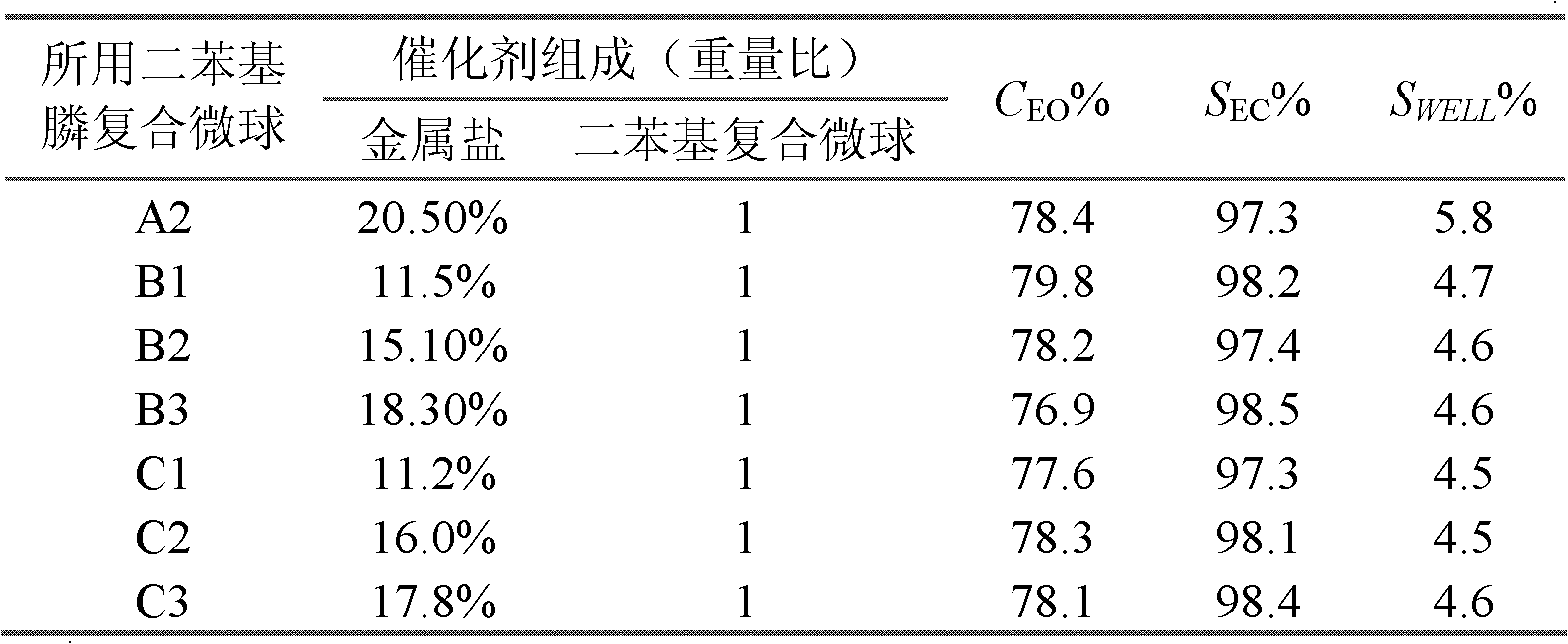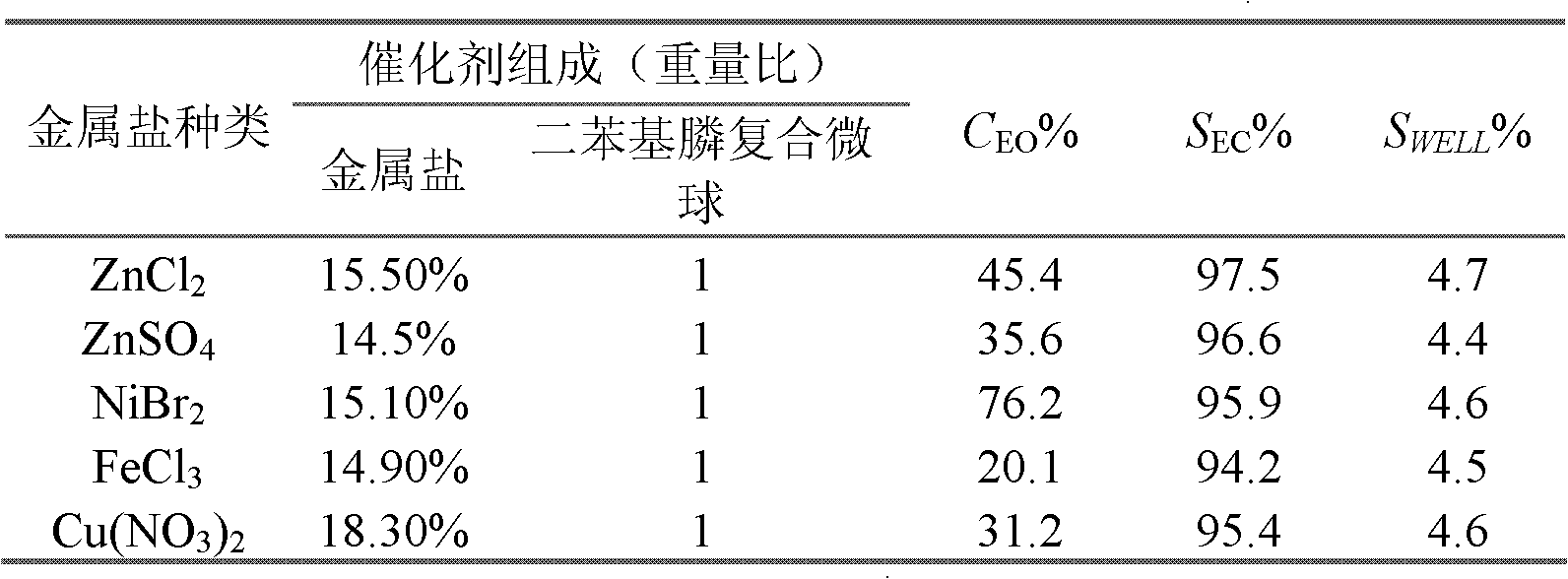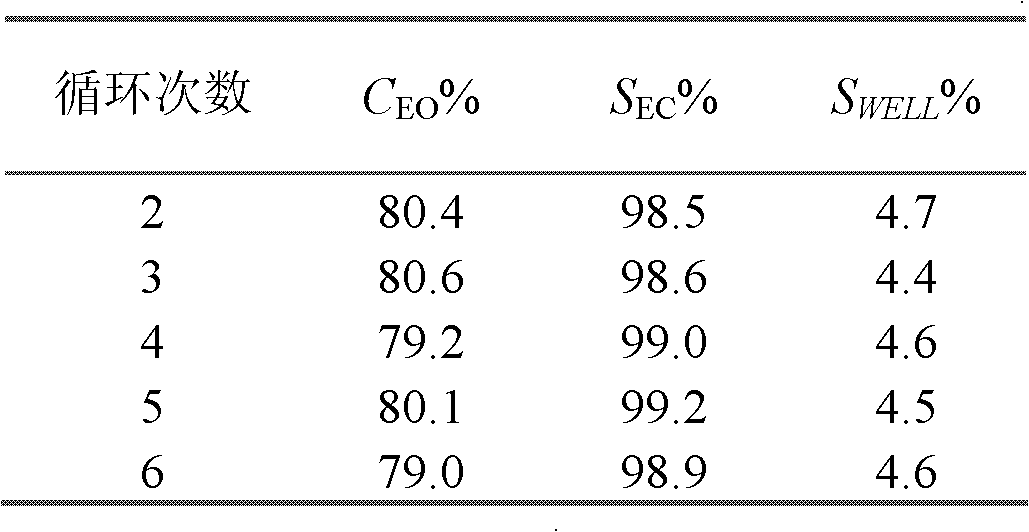Macroporous resin catalyst for preparing alkyl carbonate
A technology of alkylene carbonate and catalyst, applied in the field of macroporous resin catalyst, can solve the problems of rapid activity decline and low catalyst activity, etc.
- Summary
- Abstract
- Description
- Claims
- Application Information
AI Technical Summary
Problems solved by technology
Method used
Image
Examples
Embodiment 1
[0026] Add 58.0 grams of styrene, 0.6 grams of divinylbenzene, 30 grams of polystyrene and 0.6 grams of benzoyl peroxide initiator in a 500 milliliter three-necked flask, and stir for 2.0 hours at 60°C; then add 2.8 grams of multi-walled carbon Nanotubes, continue stirring for 1 hour for pre-polymerization. 260 mL of deionized water in which 2.5 g of polyvinyl alcohol had been dissolved was added. Adjust the stirring speed, while gradually raising the temperature to 80°C, and react for 5 hours; then raise the temperature to 90°C, react for 5 hours, and finally raise the temperature to 98°C, and react for 6 hours. After the reaction, pour out the upper liquid, wash with 85°C hot water, then wash with cold water, then filter, put in an oven to dry at 80°C, sieve, and collect composite microspheres with a particle size within the range of 0.35 to 0.60 mm a.
[0027] Chloromethylation of composite microspheres: In a 500-ml three-necked flask, add 50 grams of composite microspher...
Embodiment 2
[0030] In a 500 ml three-necked flask, add 8 grams of the composite chlorine sphere A obtained in [Example 1], 500 ml of chloroform, 45.0 grams of chlorodiphenylphosphine and 4.0 grams of metal lithium flakes, stir at room temperature for 40 hours, and the reaction ends Afterwards, the mother liquor was removed by filtration, washed with methanol, chloroform / methanol (volume ratio 2 / 3, 3 / 1, 9 / 1), and pure chloroform, and dried at 100°C for 8 hours under vacuum to obtain diphenylphosphine-substituted Composite microspheres A2.
Embodiment 3
[0032]Add monomer mixture solution (60.0 gram styrene, 1.7 gram divinylbenzene, 60 gram polystyrene, 1.6 gram multi-walled carbon nanotube and 1.0 gram benzoyl peroxide containing initiator in 500 milliliters of three-necked flasks, The solution was first stirred and reacted at 70°C for 0.5 hours), started the agitator, added a mixed solution of 200 milliliters of deionized water and 5 grams of gelatin, raised the temperature to 85°C, reacted for 3 hours, then raised the temperature to 90°C, reacted for 9 hours, and finally The temperature was raised to 100° C., and the reaction was carried out for 10 hours. After the reaction, pour out the upper liquid, wash with 85°C hot water, then wash with cold water, then filter, put in an oven to dry at 80°C, sieve, and collect composite microspheres with a particle size within the range of 0.35 to 0.60 mm b.
[0033] Chloromethylation of composite microspheres: In a 500-ml three-necked flask, add 50 grams of composite microspheres B a...
PUM
| Property | Measurement | Unit |
|---|---|---|
| particle diameter | aaaaa | aaaaa |
Abstract
Description
Claims
Application Information
 Login to View More
Login to View More - R&D
- Intellectual Property
- Life Sciences
- Materials
- Tech Scout
- Unparalleled Data Quality
- Higher Quality Content
- 60% Fewer Hallucinations
Browse by: Latest US Patents, China's latest patents, Technical Efficacy Thesaurus, Application Domain, Technology Topic, Popular Technical Reports.
© 2025 PatSnap. All rights reserved.Legal|Privacy policy|Modern Slavery Act Transparency Statement|Sitemap|About US| Contact US: help@patsnap.com



